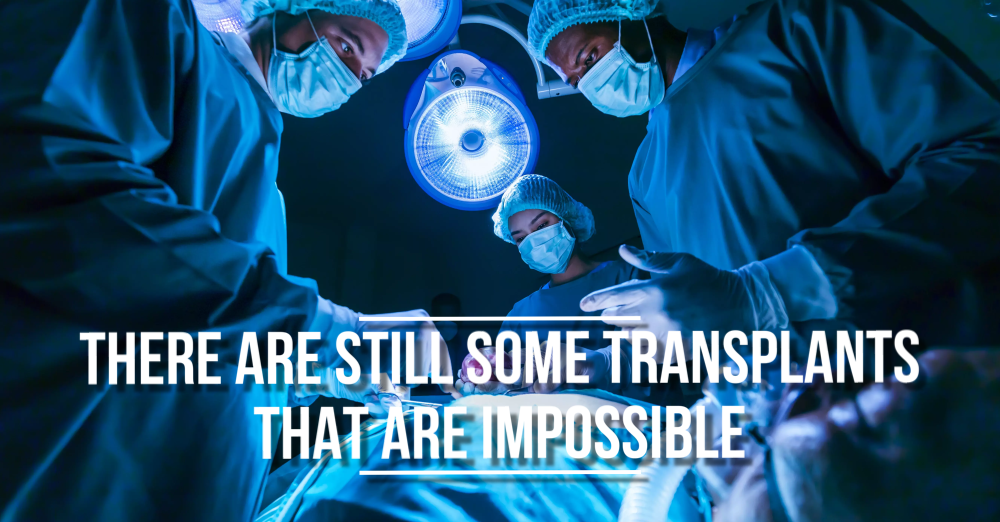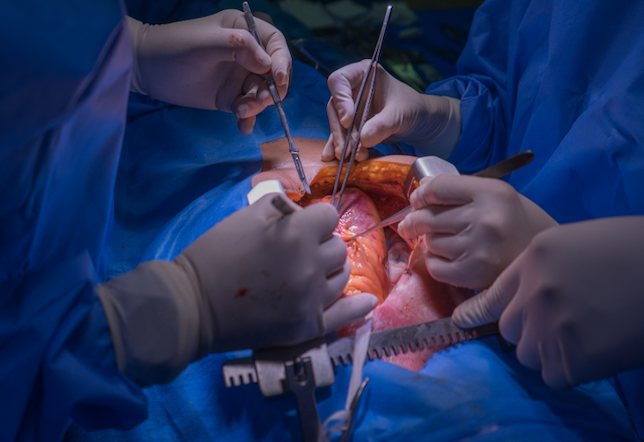
My cousin Kate was born with a severe lung disease that made it difficult for her to breathe. She was always in and out of the hospital for treatments, but unfortunately, her condition worsened. When she was 21, a lung transplant was her only chance of survival. After months of tests, his family was relieved to learn she was a perfect match for a donor. The transplant was long and grueling, and Kate was hospitalized for three weeks. Today she looks a little weak, but is happy—and alive!
Scientists have made incredible advances in transplantation. But there are still some impossible transplants, as technology and understanding of biology have yet to advance enough. One of these is brain transplantation. If some organs are essential to our functioning (impossible to survive without a heart or lungs), others are removed without severe consequences.
1— The spleen. On the left of the abdomen, the spleen purifies, stores, and recovers red and white blood cells. However, the liver can give this function and other tissues. People who live without a spleen are more susceptible to infections.
2— The colon. Also called the large intestine, it reabsorbs water during intestinal transit and compacts the stool. Without a colon, it is possible to live with a regular diet, but avoid foods that promote diarrhea, such as fried juices, sauces, or fried foods.
3— The gallbladder. Its function is to store and concentrate the bile secreted by the liver. It is attached to the visceral surface of the liver and is best known for potential problems, as it is the seat of bile salt stones (small stones) that obstruct the bile duct and cause cholecystitis. After removing the gallbladder, some symptoms, such as gas or flatulence, heartburn, and intolerance to fatty foods, tend to improve or disappear.
4— The appendix. It is a small organ located at the junction of the large and small intestines. Sometimes, foreign elements accumulate there, causing an inflammation called appendicitis. Removing the appendix is the most frequent surgical intervention.
5— The stomach. It has four main functions: mechanical digestion, chemical digestion, absorption, and secretion. However, it can be partially removed during bariatric surgery, fashionable to treat obesity, or entirely due to cancer—most of those operated on life normally.
6— The testicles and ovaries. This operation is performed in women in case of cancer (even as a preventive measure) or men after a violent trauma (traffic accident, sports). Removal results in infertility, but does not affect the lifestyle of patients.
––––––––––
🔴 In 2022, there were approximately 150,000 transplants worldwide.
––––––––––
1. Kidney. It is the most frequent transplant worldwide. Many diseases can lead to severe kidney failure, in which the kidneys do not fulfill their task of purifying the blood and removing toxins. In the case of advanced kidney damage, there is only dialysis treatment (a machine artificially eliminates toxins from the body) or a kidney transplant. Since it is possible to live with only one kidney without modifying one’s health, this is the most common transplant.
2. Liver. Although it is one of medicine’s most expensive surgical procedures, liver transplantation is the second most common. The liver is vital to the body, supporting digestion, storing nutrients, removing toxic products, and synthesizing proteins, enzymes, and glucose. We try to avoid a transplant, although there are serious situations, mainly due to hepatitis, in which the liver breaks down rapidly and irreversibly. The organ can be removed from a deceased person, as the liver remains functional for up to eight hours.
3. Heart. Heart transplantation is a surgical procedure with many risks, but it is often the only way to save a life. This transplant is possible with a deceased donor, who must meet many requirements to give his heart to someone in need. In addition, it must be done quickly after the donor’s death, as the heart remains functional for a few hours.
4. Lungs. Like the heart, lung transplantation is a complicated and risky surgical procedure reserved for severe cases of pulmonary insufficiency in which the patient does not respond to other treatments. Depending on the disease, one or both lungs (from a deceased donor) are transplanted.
5. Pancreas. It is an organ in the lower part of the stomach responsible for the production of insulin, a hormone that regulates the entry of glucose into the cells. If this fails, there is not enough insulin, which causes blood sugar levels to rise and type 1 diabetes develops. If the origin of diabetes is a pancreas malfunction, a transplant is necessary.
6. The retina. Although corneal transplants have been successfully performed for decades, it is not yet possible to replace the retina, the most anterior part of the eye that allows vision. This part of the body is made up of many nerve cell connections, and it is currently beyond the technical possibilities of medicine to transplant such a complex structure.
✅ Transplants are expensive, and not everyone can afford them. Costs include surgery and hospitalization, and immunosuppressive drugs needed after the procedure to prevent rejection of the organ received. In addition, finding a donor is also difficult because the lists are currently overloaded with patients waiting for the same organ. This situation leads many patients to seek alternatives, such as illegal organ procurement or health tourism, transplants in countries with higher survival risks.
🟦 ENCYCLOPEDIA ONLINE >
Transplant. Heart transplant. Appendicitis.
